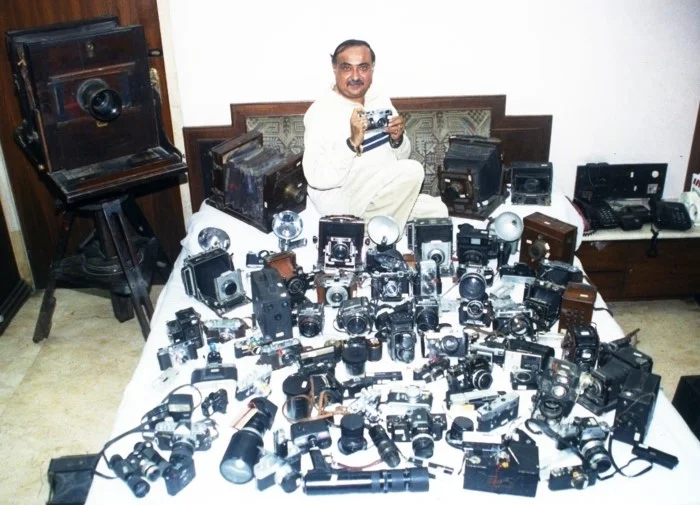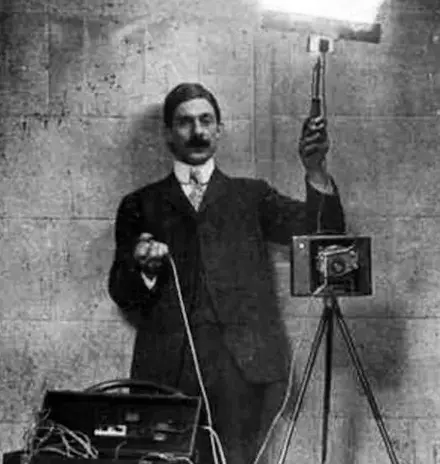Photography is a form of art that has been around for centuries. It is the process of capturing images on a light-sensitive surface. Cameras are an integral part of photography. They are used to capture images that can be turned into photographs.

Cameras have been around for over two hundred years, and in that time they’ve evolved from large, cumbersome devices to sleek, compact digital cameras that can fit in your pocket. Over the years, cameras have played a significant role in both documenting histories and capturing personal memories.
In this post, we will introduce interesting facts about cameras and photography.
Interesting Facts About Cameras and Photography
Dressing rooms are one of the most private places in a person’s life. They are places where people go to change clothes, try on new outfits, and generally feel comfortable about their appearance. For this reason, many people are surprised to learn that most states allow security cameras in dressing rooms. In some cases, the cameras are hidden behind two-way mirrors, making it impossible for people to know that they are being watched.

Dilish Parekh is a man with a passion for photography. And that passion extends to everything related to cameras. He has 4,425 cameras in his collection, making it the largest such collection in the world.
The “Bliss” photograph, taken by Charles O’Rear in 1996, is the most viewed image in history. It became the default wallpaper for Microsoft Windows XP in 2001 and has been seen by billions of people around the world. Though O’Rear has never received royalties for the use of his image, it remains one of the most iconic and beloved images of our time.
The lenses in the cameras used in the 1957 film “12 Angry Men” were gradually increased in focal length to create a sense of claustrophobia. This is done by making the room appear smaller and the characters appear closer together. The effect is most effective when combined with other techniques such as close-ups and indistinct backgrounds. By using these techniques, the director is able to create a sense of unease and tension that draws the viewer into the story.
It’s pretty common for people to want to mute their phone’s camera shutter sound. And in most places, that’s not a problem. But in Japan, it’s actually against the law to mute your phone’s camera shutter sound. The reasoning behind this law is that it helps to prevent people from secretly taking photos of others.
Most people nowadays associate photo booths with carnivals, fairs, and other public events. But did you know that the first photo booth called Photomaton was created in New York City in 1926? The idea for the photo booth came from a man named Anatol Josepho, who wanted to create a way for people to get their passport photos taken quickly and easily.
The first digital camera was invented in 1975 by Steven Sasson. He was working at Eastman Kodak at the time. The camera was a simple box that took over 20 seconds to record an image onto a cassette tape. Sasson showed his invention to his superiors but they were not interested in it and saw no market for it. It would be another 20 years before digital cameras became widely available to the public. But Sasson’s invention paved the way for the development of this now ubiquitous technology.
In recent years, there has been an increasing push for police officers to wear body cameras. The thinking behind this is that it will provide more accountability and transparency, as well as help to de-escalate conflicts. And in many cases, it appears to be working. In cities where police officers are required to wear body cameras, public complaints against officers have dropped by 88%.
Until 1861, all photographs were black and white. That’s because, believe it or not, color photography didn’t exist yet! Thomas Sutton was not only the inventor of the first SLR camera, but he was also the first person to ever create a color image. To accomplish this, he stacked three separate images of green, blue, and red filters on top of one other before projecting them onto a photosensitive plate with similar filters. The result was the world’s first color photograph! It’s amazing to think that, in just over 150 years, we’ve gone from black and white photos to full-color images and videos.

Photographers in the 1800s used a mixture of potassium chloride and aluminum to create a bright light when introduced to a spark. This mixture was used in the first flashes, which were used to take pictures in low-light situations.
The daguerreotype was a photographic process invented by Louis-Jacques-Mande Daguerre. It was the first image-capturing device, and it quickly became popular due to its impressive results. The entire process from start to finish was very complicated, but it was worth it for the stunning results. Without the daguerreotype, we wouldn’t be where we are today. The effects of this invention can still be seen in modern photography, and it is truly a remarkable piece of history.
Most brands’ names have meaning. Canon, for example, is a word that refers to a rule, law, or standard. Ilford gets its name from where it was founded. The Greek gods live at Olympus. However, the name Kodak carries no meaning. The company was founded in 1888 by George Eastman. He chose the name because he thought ‘K’ was a lucky letter.
100 years is a long time to wait for an invention. But that’s how long it took for the first auto-focus camera to be created. The SLR camera was invented in 1861, but it wasn’t until 1979 later that the auto-focus feature was added. Polaroid was the camera maker that produced this. This may come as a surprise because they are known for their instant cameras and film.
French inventor Gaspard-Félix Tournachon, also known as Nadar, captured the first aerial image in 1858 from a balloon high above Paris. Nadar was a regular fixture in the skies above the City of Light and often took his camera with him on these trips. However, the images he captured on one of those flights are no longer extant. While it is sad that we don’t have any physical evidence of Nadar’s achievement, it is perhaps not all that surprising. Early photographic processes were relatively unstable and prone to fading over time.
In 1998, Samsung made headlines for all the wrong reasons when it had to recall 700,000 video cameras. The cameras were equipped with night vision, which used infra-red technology to allow users to take pictures in the dark. However, when customers discovered that the infra-red lens could also be used in daylight, they quickly realized that it could see through certain types of clothing, revealing tattoos, underwear, and body parts underneath. The resulting outcry led to Samsung issuing a full recall of the product, at a cost of millions of dollars.
The world’s oldest surviving photograph is an image called “View from the Window at Le Gras,” and it was taken in 1826 by French inventor Joseph Nicéphore Niépce. It took eight hours of exposure to sunlight to produce the image. While the exposure time may seem shockingly long by today’s standards, it was actually quite short compared to the exposure times required for earlier photography experiments.
On the Apollo 11 mission to the moon, the astronauts carried 12 Hasselblad cameras. Because these cameras were too heavy to bring back and the astronauts decided to leave them on the surface of the moon. The film from the cameras was brought back to Earth. The cameras themselves are still there, on the moon.
Today, we take photography for granted. But it wasn’t always so easy to capture images. The first photography paper was made out of asphalt. That’s right, the same material we use to make roads. The asphalt was mixed with varnish and applied to copper or glass plates. The resulting substance was light-sensitive and allowed photographers to capture images for the first time.
Joseph Nicéphore Niépce was a french inventor who is best known for his contributions to photography. He was the creator of the first recorded image, which he captured using a method he called “heliography.” In addition to his work in photography, Niépce also designed and built several propellers and boats. He was granted several patents for his inventions, and his work helped to spur the development of photography and other fields.
Have you ever wondered why people in old photographs never seem to be smiling? There are a few reasons for this. First of all, early photographs were often taken with large format cameras. These cameras required long exposure times, which meant that subjects had to remain still for several minutes at a time. Since smiling would involve moving the muscles in the face, it was often difficult to capture a genuine smile in an early photograph. In addition, early photography was often used for formal occasions such as portraits or family gatherings. As a result, subjects tended to dress up and adopt a serious expression to look their best. Finally, it’s worth noting that smiles were simply less common in earlier times.





